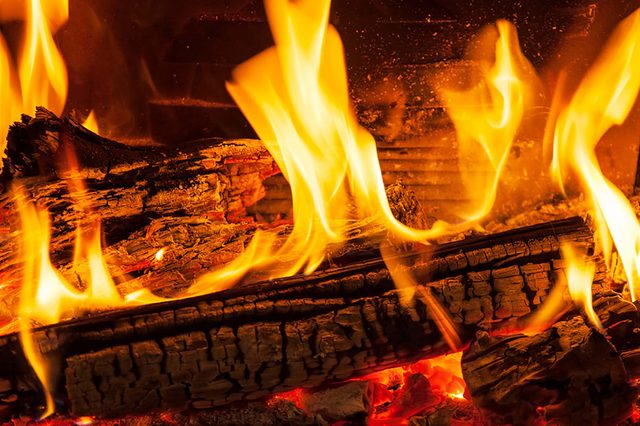
Wood smoke contains some nasty chemicals
There are many common fire hazards in your home, but this health hazard concerns the smoke from that cozy fire. Wood smoke actually contains some pretty potent toxins, including benzene, formaldhyde, acrolein, and polycyclic aromatic hydrocarbons (PAHs), according to the EPA. It also adds particulates to the air, which can harm your lungs.
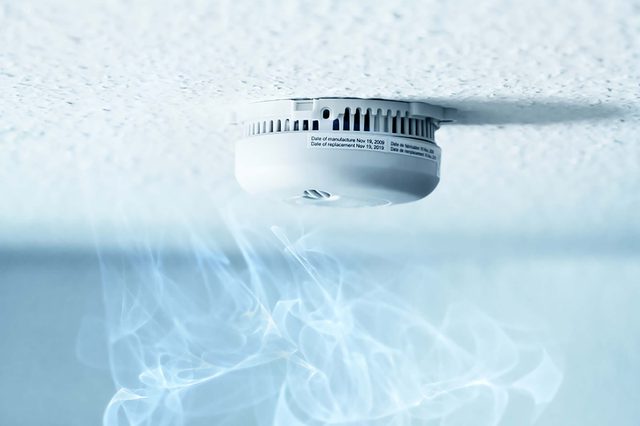
You could end up with carbon monoxide poisoning
One of the biggest dangers of fireplaces is also one of the hardest to detect: carbon monoxide. “Carbon monoxide is the odourless, colourless toxic byproduct of burning fuel,” says Ian Tong, MD, chief medical officer for Doctors on Demand. “It competes for space in red blood cells with oxygen. So even a small amount can impact your body’s ability to carry oxygen to the cells. Exposure to this gas can literally poison or suffocate you without warning, but it can also cause numerous symptoms like headaches, dizziness, and nausea.” To minimize the risk, install carbon monoxide detectors and sit away from the fireplace.
Learn about the subtle ways your house might be making you sick.
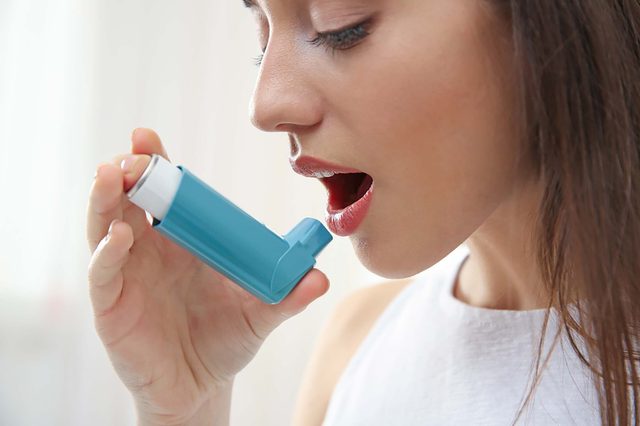
If you’re asthmatic, a fire could be problematic
People with asthma always need to be on the lookout for surprising triggers for an asthma attack. The particulates in the air from burning wood could exacerbate breathing difficulties associated with asthma. “Asthmatics should avoid open fires,” says Dr. Tong. “If that is the only way to stay warm, then exercise caution and wear an N95 mask.”
Here are the symptoms of asthma every adult should know.
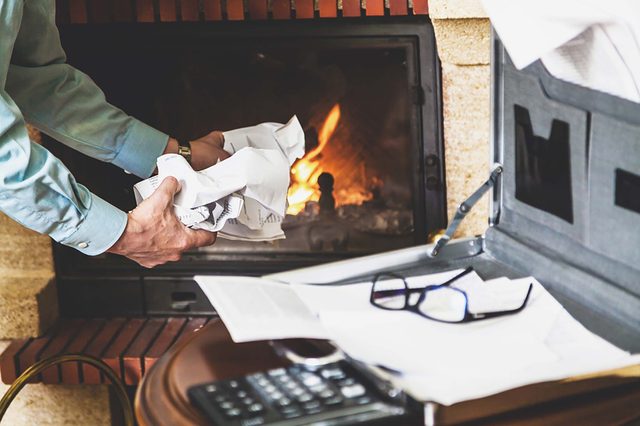
You need to watch what’s around the fireplace
Anything that surrounds the fireplace could potentially heat up and release toxins. “It’s not always what is in your fireplace that poses the danger, but what is around the fireplace and the vents for the fireplace that need some attention,” says Dr. Tong. “Do not leave plastics or chemicals or cleaners near the heat, as these could be flammable or toxic when heated. Also do not use tape around vent ducts, as this could cause build up of carbon monoxide.” This is especially an issue around the holidays. One of the arguments in the ongoing fake vs. real Christmas tree debate is that artificial trees are sprayed with fire retardant to make them less flammable, whereas dry evergreens could easily catch fire if exposed to heat.
Don’t miss these 12 cool traditional Christmas tree alternatives.
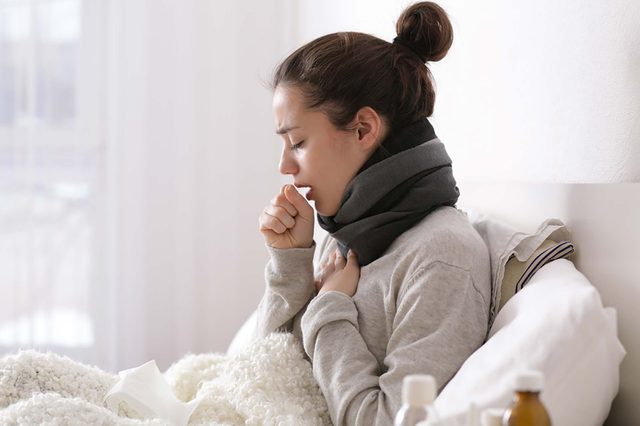
If you have respiratory ailments, you need to be cautious
People with chronic respiratory conditions like COPD could be putting themselves at risk by regularly using a fireplace. “If you have an existing respiratory condition, you should really pay close attention to air quality in your home,” Dr. Tong says. He suggests using a humidifier or a HEPA air filtre to help remove the particulates that can do the worst damage. Doctors have been particularly impressed with Molekule, an air purifier that uses nanotechnology to break down pollutants, including allergens, mold, bacteria, viruses, and airborne chemicals, on a molecular level.
Here are 20 ways you can cut down on indoor air pollution.
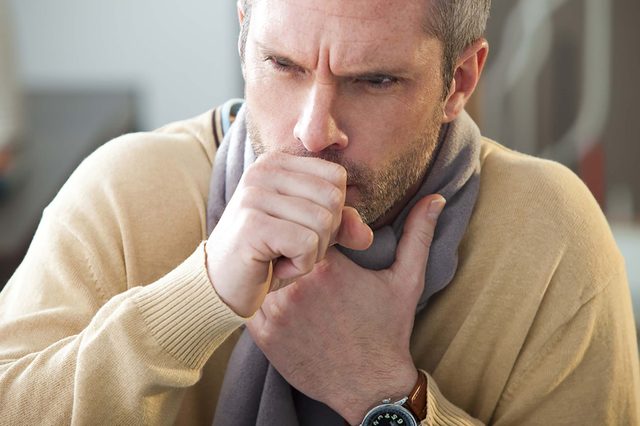
You could be putting yourself at risk for bronchitis
The EPA warns that short-term exposure to wood smoke could lead to the development of acute bronchitis—and after a number of repeated exposures to wood smoke, you could develop chronic bronchitis.
Here’s when you need to worry about a lingering cough.
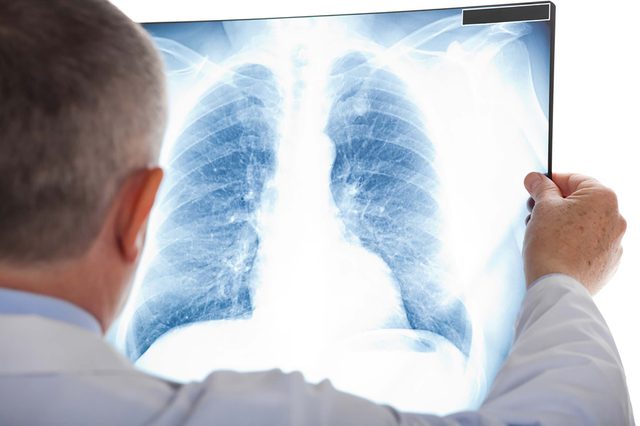
You could increase your risk for lung cancer
A 2010 study published in Environmental Health Perspectives found that fireplace users did have an elevated risk of developing lung cancer. Dr. Tong also warns of the risk: “Repeat exposure can permanently damage the lungs and increase the risk of cancer similar to smoking.”
Discover the major signs of lung cancer you might be ignoring.
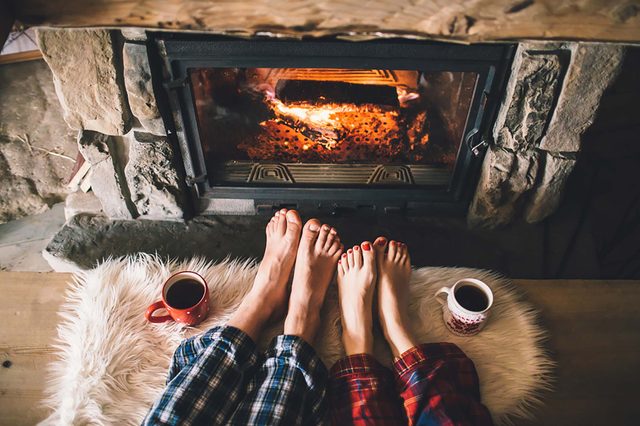
What you burn could harm you
On TV shows, criminals seem to burn a whole lot of evidence in the flames—clothing, tapes or discs, and more. But Dr. Tong says that the list of safe things to burn in a fireplace is pretty short. “Items that burn inefficiently create the most carbon monoxide,” he says. “Avoid burning wet wood, cardboard, paper with colour print, Christmas trees, painted or treated wood, plywood, particle board or chipboard or plastics.”
Next, check out 13 things you didn’t know about house fires.